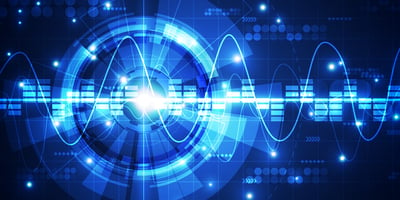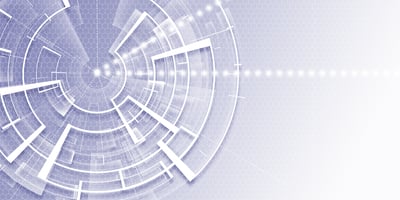Local oscillators (LO) are crucial components used in the upconversion and downconversion chains of...
How Can Multi-channel RF Synthesizers Support Quantum Computing Development?
Quantum computing is a rapidly growing, cutting-edge field. In this blog post, discover how multi-channel RF synthesizers play an important role in certain quantum systems and which instrument capabilities are most critical to maintain the delicate quantum state.
Bits vs Qubits
A binary digit (bit) can correspond to a value of either 0 (an “off” or “false” logical state) or 1 (an “on” or “true” logical state). Bits lay the foundation for classical computers, serving as the most basic or smallest unit of information that can be processed.
Quantum computers use quantum bits (qubits) as the fundamental unit of data storage. A qubit can represent values 0 or 1, just like the bits of classical computers. Where qubits differ is their ability to exist in a state of superposition. A qubit in superposition comprises of different probabilities of being a 0 or 1, thus being in two states simultaneously. Quantum superposition ends once measured, where the qubit falls into a base state of 0 or 1.
A common way to visualize this concept is spinning a coin on a table. As the coin spins, it exists in two states or a superposition of heads and tails. Observing which side the coin lands on ends the state of superposition as it collapses into one of its two base states.
Qubits are often illustrated in a Bloch sphere, with the north and south poles representing the states of 0 and 1, respectively. Bits exist only on the north of south poles. Qubits in superposition are denoted by a vector falling anywhere on the sphere between the two poles comprised of angles in the z-axis (θ) and x-axis (Φ).

Quantum computers leveraging phenomenon like superposition drastically reduce the time to complete computations, process information, and run simulations compared to even the fastest, most advanced classical computers.
Multi-channel RF Synthesizers & Superconducting Quantum Systems
There are several different techniques being used right now to design quantum computers. A few approaches involve the use of RF signals, three of which include:
- Superconducting
- Trapped Ion
- Silicon Spin/Quantum Dot
Superconducting quantum systems, for example, use RF pulses to manipulate and control the state of qubits. These pulsed waveforms, which are generated by arbitrary waveform generators (AWG), combine with an RF sinusoidal carrier signal that has the highest level of spectral purity and stability. Instruments such as the Holzworth HS9000 Series multi-channel RF synthesizer can serve as this highly stable, phase coherent RF signal source. The HS9000 Series offers several critical capabilities to support quantum computing development, such as:
The HS9000 Series offers several critical capabilities to support quantum computing development, such as:
High Channel Density: Quantum systems require more RF signal sources as they add more qubits, which increases the importance of having multiple signal sources available in a single unit to save space and optimize performance. Holzworth has the highest density multi-channel RF signal sources. The HS9000 Series, for example, offers a 32-channel configuration in a compact 1U chassis.
Phase Coherent Channels: Phase coherency describes the relationship between the peaks and troughs of waveforms, where signals maintain a constant relative phase with one another. Quantum systems require relative signal-to-signal phase stability in a multi-channel RF synthesizer to optimize the manipulation and communication between qubits.
Low Phase Noise: Phase noise can disrupt the delicate nature of quantum computing, affecting the signal source’s frequency stability and other highly controlled elements of the system such as temperature. Utilizing RF signal sources with low phase noise creates a more stable environment to facilitate quantum communications.
Read Now: Quantum Solutions Guide
For a deeper dive into signal generation with stable channel-to-channel performance that can support the needs of quantum computing systems, check out the Holzworth Quantum Solutions guide. In this go-to resource, readers will learn basic quantum concepts (qubits, superposition, and entanglement), the importance of phase coherent RF signals in superconducting quantum computers, and how Holzworth multi-channel RF signal sources can support the design and development of emerging quantum computing technologies.




